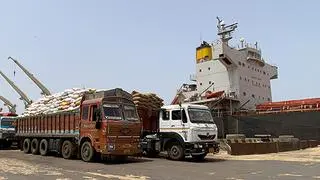The government and the public’s misconception of business aviation being a preserve of the rich and an ideogram of luxury is ill- founded. This misconception has also been responsible for the current woes of the business aviation industry as its rightful and just demands are often ignored.
It is indeed ironic that an industry where a ₹100 spend can result in ₹325 worth of total benefits for the country, or where 100 direct jobs in aviation can result in 610 jobs overall, according to the draft civil aviation policy 2014-15, is today facing negative growth.
Taxing rules The business aviation sector is faced with regulatory and taxation hurdles to such an extent that operators are either opting to close down or get their aircrafts registered outside India. This is a loss to the economy as a whole. Economically viable skilled labour and its favourable geographical location put India in an advantageous position to become an aviation maintenance hub for itself and neighbouring countries.
However, instead of taking advantage of the situation, our policies and steep tax structure are ensuring that instead of India, countries such as UAE, Sri Lanka, Malaysia and Singapore become maintenance hubs. Airworks, a leading maintenance, repair and overhaul (MRO) player in India, opened many new bases last year — but none of these was opened in India. They were all opened in the neighbouring countries.
This misconception is also the prime reason why, despite positive pre-Budget indications, finance minister Arun Jaitley, at the eleventh hour, failed to cut customs duties on private aircraft and give tax benefits to MROs. Had he delivered on the market sentiment, almost all woes of this lagging industry would have been addressed.
The pilot project of the new government, ‘Remote Area Connectivity’, would have also taken off in the right earnest. Yet again, the misconception that any aviation business other than scheduled commercial airlines are meant for the elite, prevailed.
Keep it open Is this perception of business aviation as a luxury service justified? This sector services the needs of air ambulances, tourism, remote area connectivity, industrial surveys (pipe lines, transmission lines, geo mapping, etc.), off-shore operations, rescue and relief operations, anti-insurgency operations and much more.
Industrialists too, use business aircraft either to locations where there is poor connectivity or if the fixed timings of scheduled airlines restrict quick travel. Those who understand the relevance of the concept that ‘time is money’ would be easily able to appreciate how travelling in a small private aircraft to a destination with poor scheduled airline connectivity translates into revenue in big businesses.
The misconception of excess and opulence that shrouds the business aviation sector needs to be cleared. A better understanding of how this sector influences the growth of the economy and enables industrial growth is the key to effecting policy changes.
If this does not happen soon, we may be repeating the mistakes of our ‘closed economy’ past, while our competing countries continue to lure the businesses we have failed to capture.
The writer runs an ‘on demand’ aircraft charter business, and is the vice-president of the Business Aircraft Operators Association







Comments
Comments have to be in English, and in full sentences. They cannot be abusive or personal. Please abide by our community guidelines for posting your comments.
We have migrated to a new commenting platform. If you are already a registered user of TheHindu Businessline and logged in, you may continue to engage with our articles. If you do not have an account please register and login to post comments. Users can access their older comments by logging into their accounts on Vuukle.